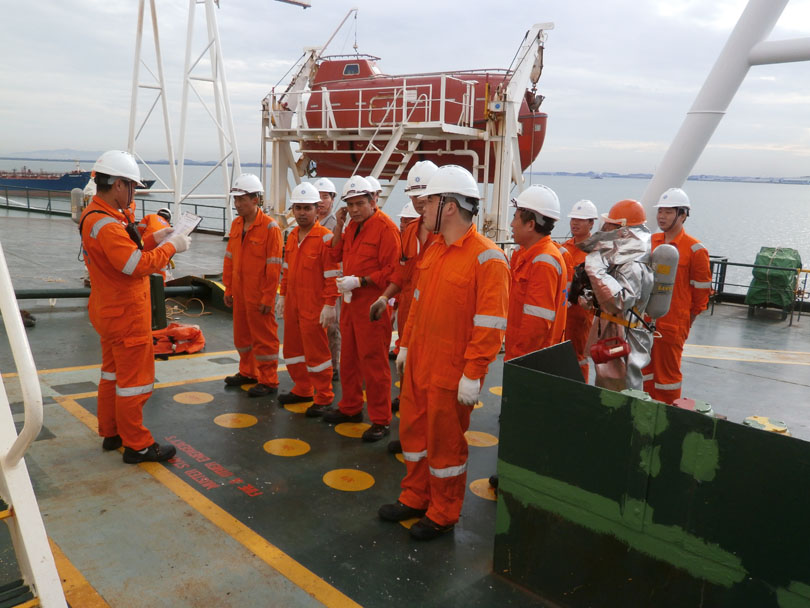A career at sea is wonderful! However, after many years of sailing, there comes a time for a seafarer when the feeling seeps in, it’s enough! Now I must be on land. I often hear this from most of the seafarers who are contemplating transitioning ashore. However, this is easier said than done Leaving a fascinating sea career is not an easy decision, yet many seafarers who dared to come ashore early have not only conquered themselves but also remained successful in their new endeavours.
In this article, I will try to touch few important points which often a seafarer deliberates when he/she wish to make a transition ashore. Let’s see them as below:
1. What is your purpose & objective behind considering a job ashore?
The first step to switch ashore is to know “WHY ASHORE”? This question needs to be answered honestly to enable the transition considerably smooth with days pass by. This clarity on wanting to be ashore helps providing better visibility of your decision to the organisations that are considering your candidature for a role ashore. The shore job might be appeared less cosy and challenging to many, eventually leading them to go back to sailing has often been cited by organisations while hiring seafarers with a pinch of salt many times. The commitment and conviction from you would help navigating the hiring process successfully entailing a career ashore.
2. When you think of a job ashore what do you think are your possible career options?
Another important question a seafarer needs to check is the possible career options available ashore
A careful research, planning is required to ensure you hit the road right. There is a plethora of options available to shift ashore namely – Technical, Chartering, Operations, Commercial, Marketing, Sales, Crew management etc each of which have people working within and being seafarer will give you an edge as compared to other candidates who are civilians. However, choosing the one which you are interested OR most importantly suited to, will go a long way. You could talk to various shore professionals into different roles and consider to their advice. Take your time, you need to have a decent length of run up for mental preparation as this exercise will assist in firming up your decision.
3. When you think of a job ashore what minimum salary expectation do you have?
Sailing salary vis -a -vis shore salaries cannot be compared so do not shift having a fancy notion that your sailing salary will be considered for shore job. Don’t be surprised that despite having a wealth of experience at sea you will be considered a fresher at shore. Having covered this, you would need to plan your finances accordingly with all tax related compliances becoming applicable unlike a seafarer salary which is mostly tax free. If not planned well, you will end up in a shock in the system and will be the waypoint for altering course back to sea.
4. When you think of a job ashore what factors appear in your favour?
A very important deliberation for a seafarer. Don’t just switch just because you don’t wish to sail anymore and wish to start something ashore. Check whether your finances in control, whether you have a family support, if trying entrepreneurship do you possess the skill, if desire to pursue a career outside shipping do you have a desired qualification.
5. When you think of a job ashore what factors do you see as a challenge/challenges?
Each may have a different challenge and majority I have observed is the adjustment to office culture. Age factor, financial obligation, Timeline are another factors to be taken into consideration. If you do not have the timeline factored in each of the above points, it will be very difficult to assess the time when you would be ready to quit.
6. What could be the probable solutions to overcome the above challenges?
Clarity: which will come with deliberate contemplation and once cleared you now need to have a firm WRITTEN down action plan with associated timeline. Also, sharing the same with family will help them understanding your actions better.
The approach: Shore job brings a very different perspective on the industry which you felt “you knew it all”. Hence one should approach the shore job as a new beginning with lot of learning opportunities along the way.
Courses/training to switch ashore: Without clarity of purpose doing some course which is available, will be only waste of your time and money.80% of shore jobs available do not require any training other than the experience gained at sea.
To conclude: Switching ashore for seafarer has always been the toughest decisions of their life however, if proper due diligence is done, the decision could be very enriching and fulfilling for the seafarer and his family in the long run. If you have followed the above steps diligently, the chances of going back to sea is minimal. Last but not the least, once you have shifted ashore and started working, just have a faith and belief in yourself and your journey will be adventurous and thrilling just the way you started your first voyage at sea.
Good Luck!
Author: Neetu Jaiswal
Founder: Nevoxel Counsultancy










